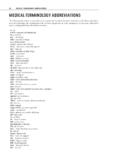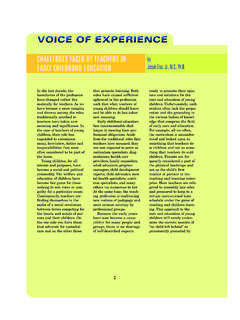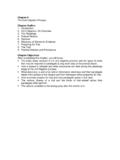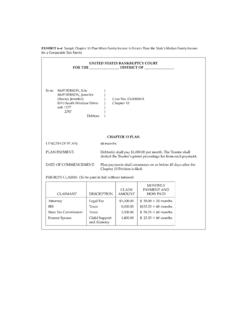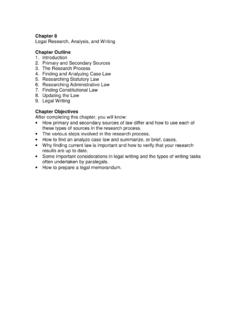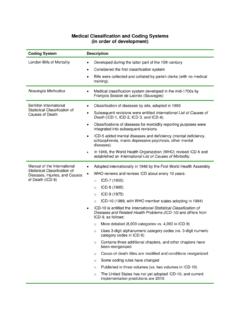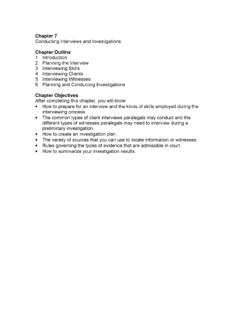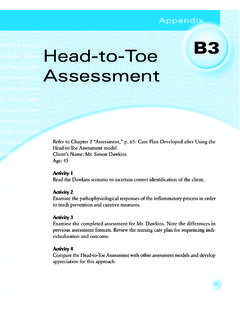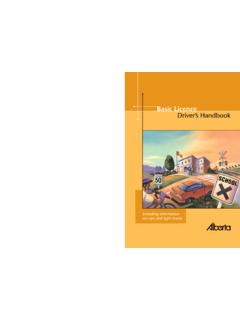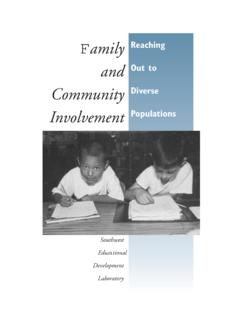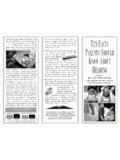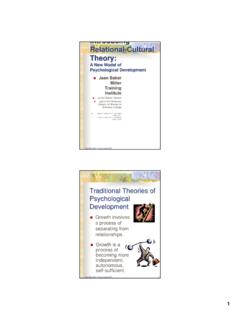Transcription of Case Study 05 - Brands Delmar - Cengage Learning
1 case Study 3/30/06 4:19 PM Page 5-1. C A S E S T U D Y 5 : school -age child Adapted from Thomson Delmar Learning 's case Study Series: Pediatrics, by Bonita E. Broyles, RN, BSN, MA, PhD. Copyright 2006 Thomson Delmar Learning , Clifton Park, NY. All rights reserved. GENDER. F. AGE. 7. SETTING. Clinic ETHNICITY. Mediterranean PREEXISTING CONDITIONS. Beta-thalassemia COEXISTING CONDITIONS. Hemosiderosis PHARMACOLOGIC. Deferoxamine mesylate (Desferal). PSYCHOSOCIAL. Effects of frequent and continued hospitalizations THE BLOOD.
2 Overview: This case requires knowledge of beta-thalassemia, treatment and complications, growth and development, as well as an understanding of the client's background, personal sit- uation (living with chronic condition), and parent-child relationship. 5-1. case Study 3/30/06 4:19 PM Page 5-2. 5-2. Client Profile Adriana is a 7-year-old who lives with her parents in a suburban commu- nity. Her parents brought Adriana to the United States from their home- land in Greece when she was 1 year old. At the age of 3, Adriana was in the 10th percentile for height and weight, pale, and her hemoglobin was g/dL.
3 Following further diagnostic studies, she was diagnosed with beta-thalassemia major. Over the course of the next 4 years, Adriana was hospitalized every 1 2 months so she could be transfused with packed red blood cells. case Study During a routine follow-up visit at the hematology clinic, Adriana's labora- tory results were as follows: Hemoglobin: 10 mg/dL. Total serum iron: 150 g/L. The hematologist discusses the planned treatment with Adriana and her parents. Questions 1. Discuss the significance of Adriana's cell transfusions and how they affect the family's geographical background to her child's need for future blood transfusions.
4 Diagnosis. 7. What are the priorities of care for 2. What is beta-thalassemia, its incidence, Adriana? and etiology? 8. Adriana is diagnosed with hemosidero- 3. Discuss the clinical manifestations of sis. What is hemosiderosis and how is it beta-thalassemia. treated? 4. Discuss the significance of Adriana's 9. Adriana is prescribed an initial dose of laboratory values. deferoxamine mesylate 1 g IM and 400 mg 5. Discuss the complications associated SC each day for 5 days. Adriana weighs with the chronic blood transfusions associ- 15 kg (33 lb).
5 Would the nurse question ated with Adriana's condition. this prescription? 6. Discuss the standards of care 10. Discuss the options available for once Adriana reaches the parameters Adriana to prevent lifelong blood prescribed for annual packed red blood transfusions. Questions and Suggested Answers 1. Discuss the significance of Adriana's family's geographical background to her diagnosis. Beta-thalassemia is an autosomal recessive genetic disor- der affecting hemoglobin chains and has its highest incidence in children Copyright 2007 by Thomson Delmar Learning , a division of Thomson Learning , Inc.
6 Permission to reproduce for classroom use granted. case Study 3/30/06 4:19 PM Page 5-3. case Study 5: school -AGE CHILD 5-3. 2 1. Heme Heme 2 1. polypeptide polypeptide (globin) chain (globin) chain Figure 5-1 The structure of normal hemoglobin. of Mediterranean descent. The primary populations are Italian, Greek, and Syrian. With the increased influx of immigrants into the United States, the incidence of thalassemia is increasing. 2. What is beta-thalassemia, its incidence, and etiology? Normally the hemo- globin is made up of globin chains (Hb- and Hb- ) (see Fig.)
7 5-1). In beta- thalassemia the beta chains of the molecule of the hemoglobin are missing. This results in deficient hemoglobin and the development of fragile, micro- cytic, hypochromic erythrocytes. These erythrocytes are unable to carry ade- quate oxygen to the cells and tissue, leading to inadequate tissue perfusion and delayed growth and development. According to the Cooley's Anemia Foundation, there are three types of beta-thalassemia and their effects on the body range from mild to severe. Thalassemia minor, also referred to as tha- lassemia trait, lacks the beta protein but not sufficiently to interfere with the normal functioning of the body's hemoglobin.
8 A person with thalassemia minor simply has the genetic trait. Thalassemia intermedia is a condition where the lack of beta protein in the hemoglobin is great enough to cause a moderately severe anemia and significant health problems, including bone deformities and enlargement of the spleen. The severity of this condition is measured by the number of blood transfusions the child requires. Generally speaking, clients with thalassemia intermedia need blood transfusions to improve their quality of life, but not in order to survive.
9 Finally, beta- thalassemia major is the most severe form of this disease, in which the com- plete lack of beta protein in the hemoglobin causes a life-threatening anemia that requires regular blood transfusions and extensive ongoing medical care. Enlargement of both the spleen and liver, and jaundice resulting from Copyright 2007 by Thomson Delmar Learning , a division of Thomson Learning , Inc. Permission to reproduce for classroom use granted. case Study 3/30/06 4:19 PM Page 5-4. 5-4. increased hemolysis of the abnormal red blood cells, is common.
10 The stress placed on the bone marrow to increase production of erythrocytes for tissue perfusion causes hyperplasia of the bone marrow that leads to thickening of the bones throughout the body and delayed development. Thalassemias are most dominant in certain Eastern European popula- tions. Individuals of Mediterranean descent are more likely to have defi- cient beta-globulin thalassemia. This condition also is referred to as Cooley's anemia or Mediterranean anemia. Both Africans and African- Americans also have an increased incidence of thalassemia.

